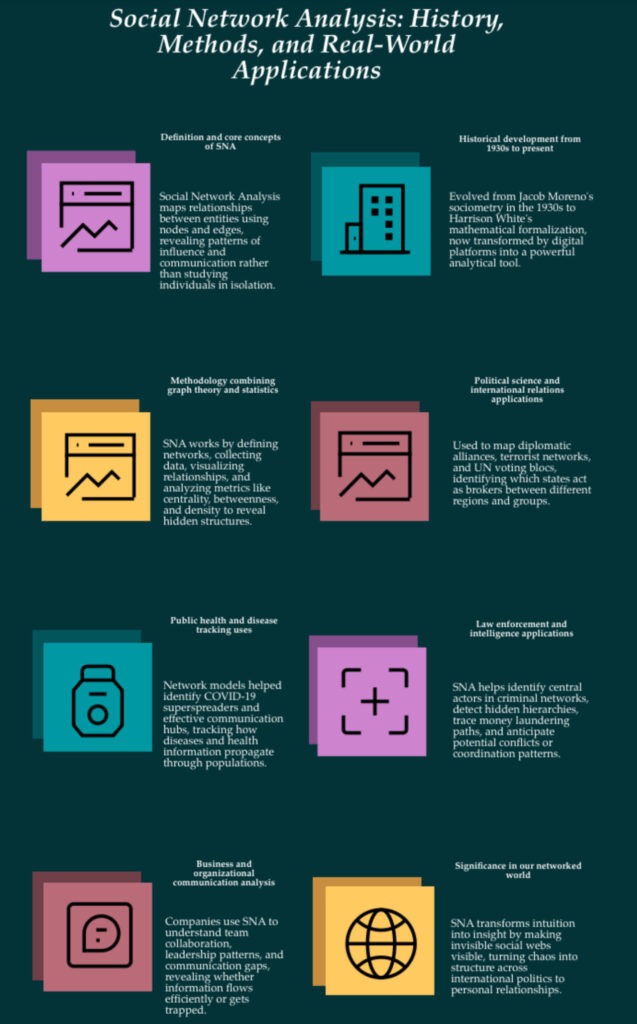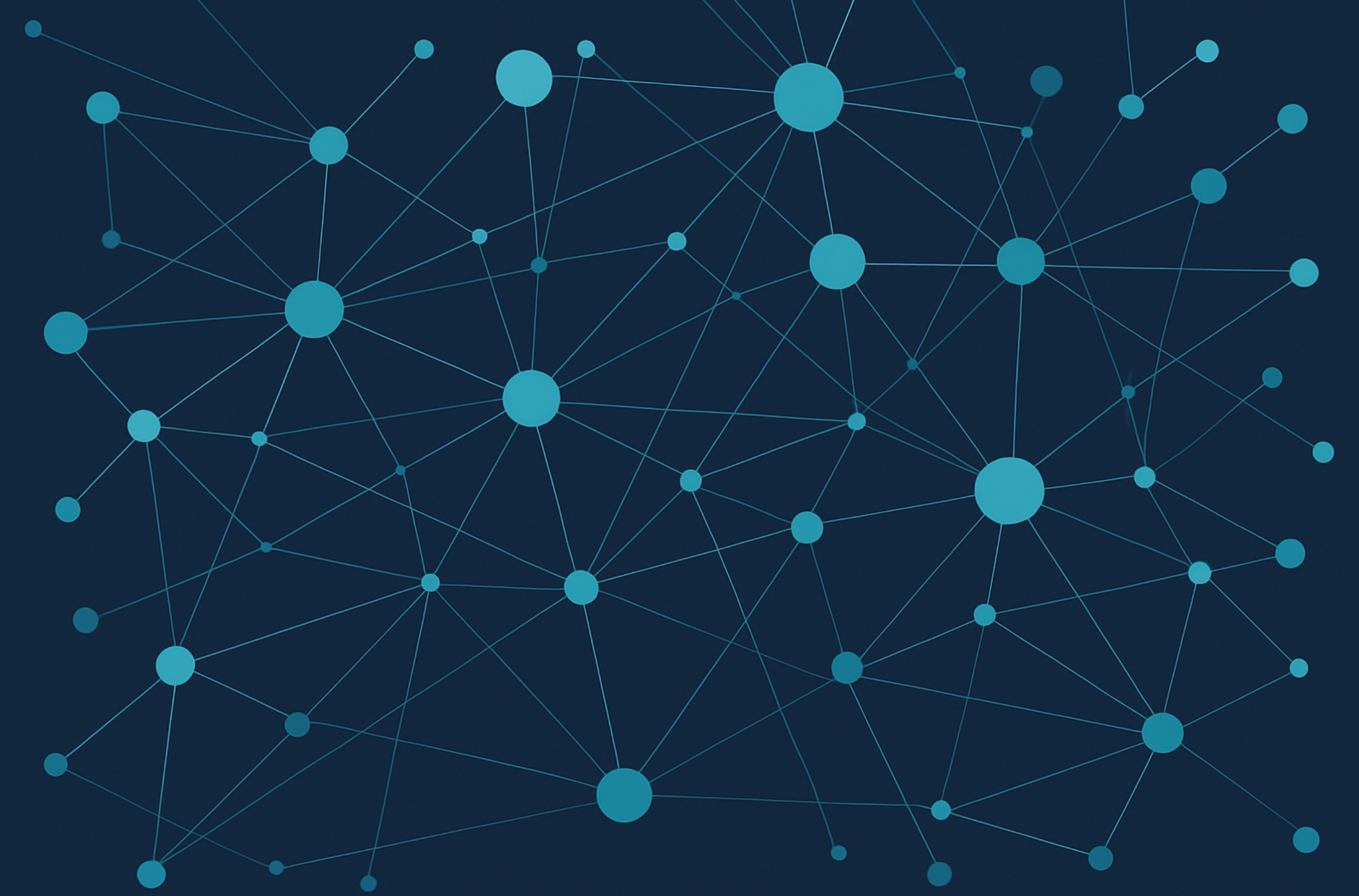What Is Social Network Analysis?
Social Network Analysis (SNA) is a research method used to map and measure relationships between people, organizations, or entities. Instead of studying individuals in isolation, SNA looks at how they are connected — revealing patterns of influence, communication, and power. It turns social relationships into data networks, where nodes represent actors and edges represent the links between them.
A Brief History of SNA
The roots of Social Network Analysis stretch back to early sociology and anthropology:
- 1930s–1950s: Psychologists like Jacob Moreno pioneered sociometry, using diagrams (sociograms) to visualize friendship and communication networks.
- 1960s–1970s: Scholars such as Harrison White at Harvard formalized SNA into a mathematical and structural discipline, introducing concepts like centrality and cliques.
- 1980s–1990s: With the rise of computing, SNA expanded into political science, epidemiology, and organizational studies.
- 2000s–present: The internet and social media transformed SNA into a digital powerhouse. Platforms like Twitter, Facebook, and LinkedIn became living laboratories for studying influence, misinformation, and social mobilization.
How Social Network Analysis Works
At its core, SNA combines graph theory with statistical modeling to interpret social data.
- Define the network: Identify nodes (people, states, institutions) and ties (communications, trade, alliances, etc.).
- Collect data: This can come from surveys, archives, digital platforms, or open-source datasets.
- Visualize: Software like Gephi, NodeXL, or UCINET turns the data into network graphs.
- Analyze metrics:
- Degree centrality → how connected an actor is.
- Betweenness centrality → who acts as a bridge.
- Closeness → how quickly information reaches someone.
- Density → how interconnected the overall system is.
SNA helps researchers quantify influence and detect hidden structures — whether in online communities or global alliances.
Applications of Social Network Analysis Across Fields
1. Political Science and International Relations
SNA is used to map diplomatic alliances, terrorist networks, and transnational advocacy groups. For instance, analyzing the structure of UN voting blocs or trade partnerships reveals which states act as brokers between regions.
2. Public Health
Network models track the spread of diseases or public health information. During the COVID-19 pandemic, SNA helped identify key “superspreaders” and effective communication hubs.
3. Business and Organizational Studies
Companies use SNA to understand collaboration, leadership, and communication gaps inside teams. It can reveal whether information flows efficiently or gets trapped in silos.
4. Communication and Media Studies
SNA maps online discourse, showing how narratives, hashtags, or misinformation propagate through social media ecosystems.
5. SNA in Law Enforcement and Intelligence
Social Network Analysis has become a vital tool for police investigations, counterterrorism, and cybersecurity.
By mapping the relationships between suspects, communications, and financial flows, investigators can:
- Identify central actors or brokers who connect otherwise separate criminal groups.
- Detect hidden hierarchies within organized crime or extremist networks.
- Trace money laundering paths and illegal trade routes.
- Anticipate potential conflicts or coordination patterns by observing shifts in network density or alliances.
After major terrorist attacks, such as 9/11, SNA was used to reconstruct contact networks and uncover indirect ties between perpetrators. In modern policing, algorithms trained on social graph data help forecast risk zones, though this also raises ethical debates around privacy, bias, and surveillance transparency.
Why SNA Matters
We live in a networked world. From international politics to personal relationships, our actions ripple through invisible webs of connection. Social Network Analysis gives scholars and decision-makers a way to see these patterns — turning intuition into insight and chaos into structure.
In the age of data, SNA is not just a research tool; it’s a way of thinking about society itself.


No responses yet